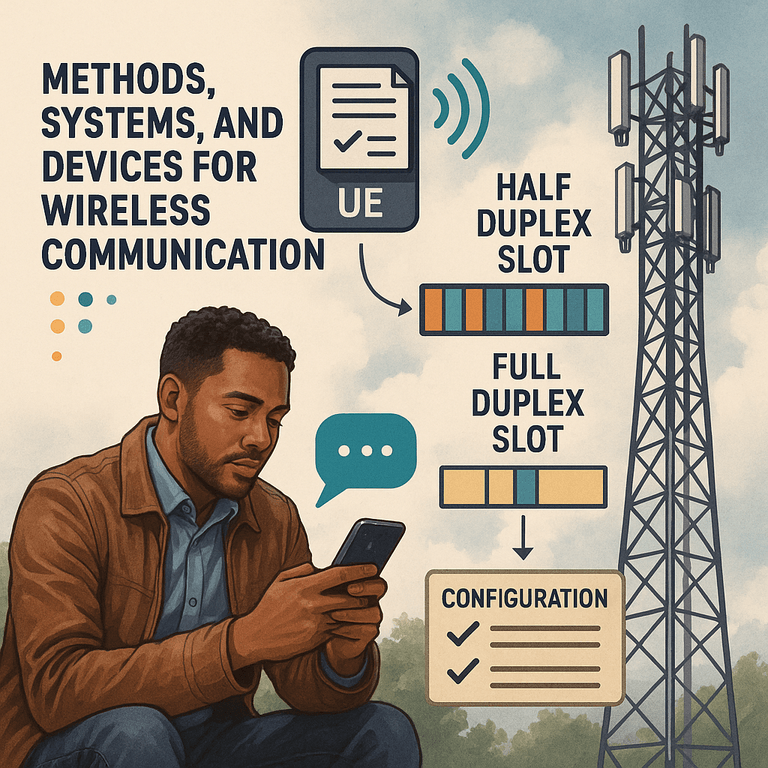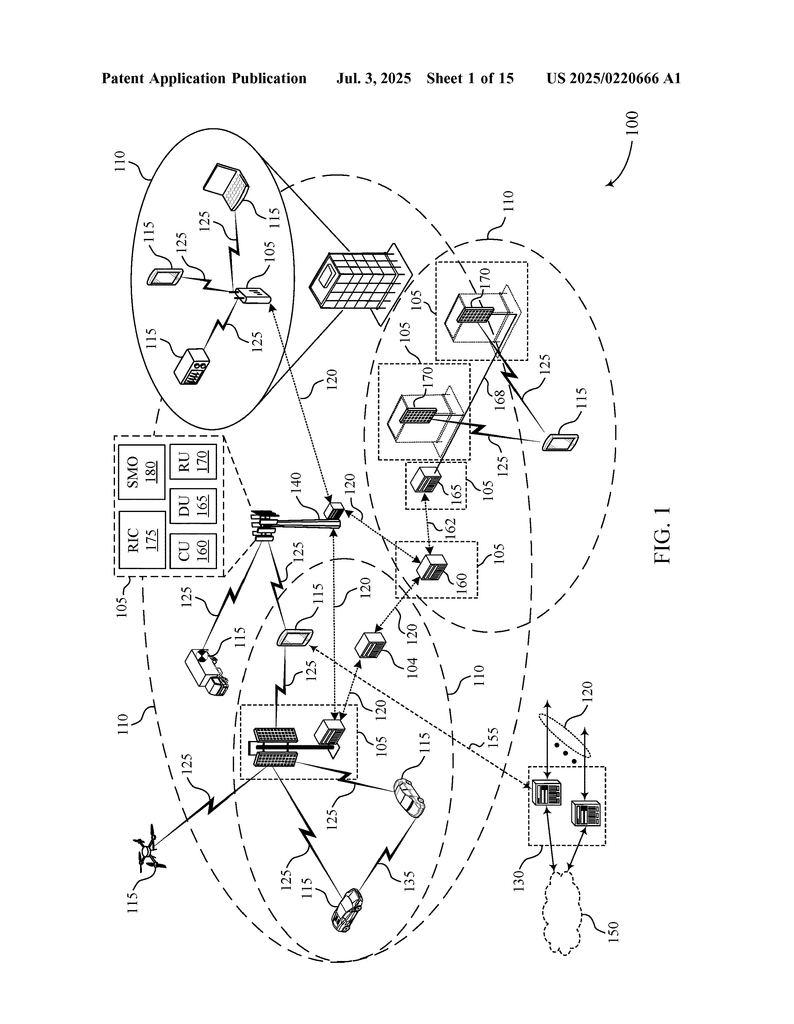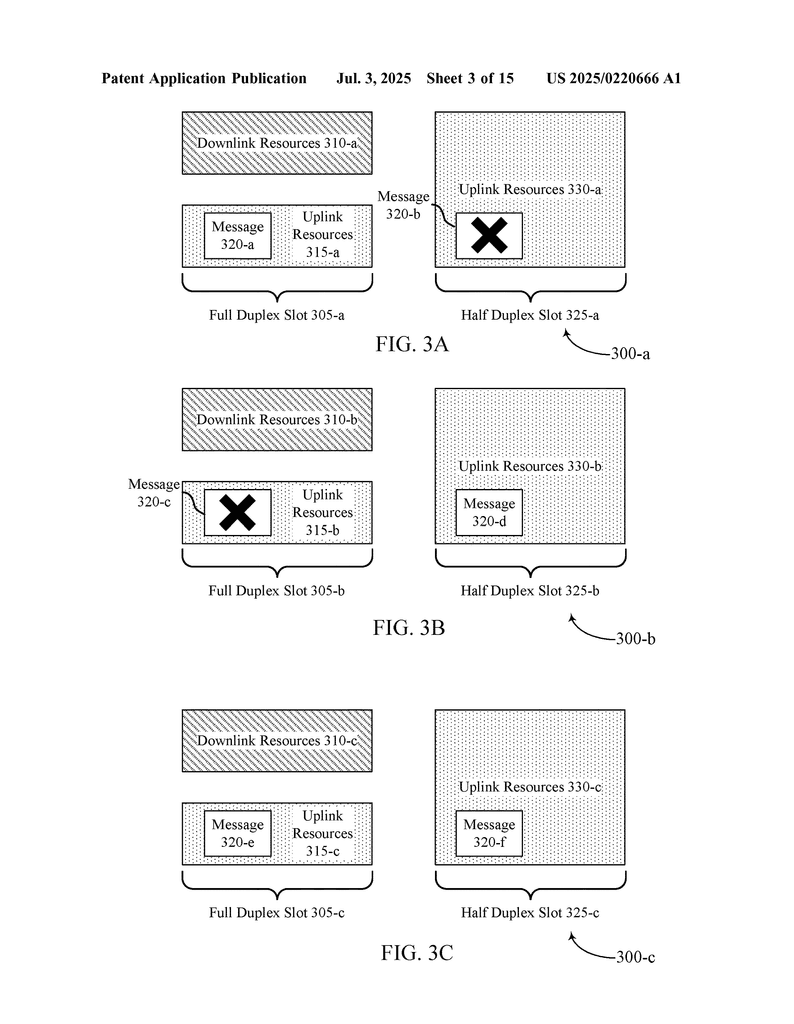Invented by ABOTABL; Ahmed Attia, ABDELGHAFFAR; Muhammad Sayed Khairy, IBRAHIM; Abdelrahman Mohamed Ahmed Mohamed
The way our phones and networks talk to each other is changing fast. As more people use data and want things faster, wireless networks need new tricks to keep up. Today, we break down a new patent application that helps phones and networks send messages back and forth more smoothly, using both half duplex and full duplex slots. If you want to really understand how your phone might soon work better in busy places—this is for you.
Background and Market Context
In the world of wireless communications, speed and reliability are everything. People want to watch videos, play games, and send messages without waiting. Networks are always trying to keep up, especially as more devices connect all the time. We have already moved from older systems like 4G LTE to newer ones like 5G, called New Radio or NR. Each step has tried to make sending and receiving data better, but there’s always a catch: as the number of users grows, networks can get crowded, and devices may slow down.
To get around this, phones (called user equipment, or UE) and the network (like cell towers or base stations) need smarter ways to talk. Sometimes, a UE can only send or receive at one time (half duplex). Sometimes, it can do both at once (full duplex). Full duplex is like talking and listening at the same time, while half duplex is like walkie-talkies—one person talks, the other listens, then they switch. Full duplex can make things much faster, but it’s harder to do because the phone has to handle signals going both ways at once without getting mixed up.
Many new phones and networks are built to try both modes, but switching and managing these modes is tricky. Each mode can use different antennas and settings, and the network has to tell the phone which resources it can use and how to use them. If this is done badly, the phone might waste power, get confused, or even drop messages. That’s why this patent application matters: it gives a way for the network to set up these modes and tell the phone exactly how to use its resources, so everything runs smoother.
In real-world terms, this means fewer dropped calls, faster uploads, and better connections in busy places like sports stadiums, concerts, or city centers. It also helps as more smart devices—like cars, sensors, and appliances—try to connect at once. The market is hungry for these solutions, and companies are racing to patent new ways to let devices talk faster and more reliably.
Scientific Rationale and Prior Art
To understand this invention, let’s look at how things have worked before. In the past, networks used fixed rules to decide when and how devices could send data. For example, in half duplex, your phone might get a slot to send data, then wait for its turn to listen. In full duplex, it tries to send and receive at the same time, which is faster but much harder because the phone’s own signal can get in the way of what it’s trying to hear. This is called self-interference, and it’s a big challenge in wireless design.
Older patents have covered ways to handle either half or full duplex, and some have suggested switching between the two. But these approaches often required the phone to guess which settings to use, or they wasted resources by not tailoring the setup to what the phone could actually do. Sometimes, the network would send a “grant”—a message that tells the phone what resources it can use—but the grant wasn’t specific enough. The phone might not know which antennas to use, which direction to point its signals, or how wide to make its communication beam. This could lead to using too many antennas (wasting power) or not enough (losing speed), or even missing messages altogether.
Other prior art has tried to fix this by having the network send more detailed instructions, but these were often not flexible enough. If a phone could do full duplex in some situations and half duplex in others, the network couldn’t easily tell it how to change settings for each type of slot. This led to either underusing the phone’s capabilities or making things too complex to manage in real time.
Another problem with older systems is that they didn’t support “configured grants” that could handle both half and full duplex slots together. A configured grant is like a standing order from the network, saying “here’s your set of resources—use them when you need to.” But if the grant didn’t match the phone’s real abilities, it could mean wasted chances or mixed signals.
The new patent application builds on all this by letting the network and the phone coordinate much more closely. It allows the network to send not just a grant, but also a set of configurations—specific settings for each mode (half duplex or full duplex) and for each type of slot. These settings can include which antennas to use, which direction to send signals, how wide the communication beam should be, and even which reference signals and coding to use. With this, the phone always knows exactly how to act in each slot, making the whole process smoother and more efficient.
Invention Description and Key Innovations
This invention is all about letting the network and the phone work together better, especially when the phone can handle both half duplex and full duplex modes. Here’s how it works in simple terms.
When a phone wants to send data (like uploading a video or sending a message), it waits for the network to give it the go-ahead. This is called a “grant.” The grant tells the phone which time slots and frequencies it can use. The new method lets the grant include both half duplex slots (where the phone just sends or receives, not both at the same time) and full duplex slots (where it can do both at once).
But the real magic happens with the control signaling that comes with the grant. The network sends the phone detailed instructions for each type of slot. These instructions, called configurations, tell the phone things like:
- Which antennas to use
- Which direction to point its signal (beam direction)
- How wide to make the signal (beam width)
- Which reference signals and coding (so the network can understand the message)
For example, the phone might use four antennas and a wide beam for half duplex slots, but only two antennas and a narrow beam for full duplex slots. The network can set these values however it likes, based on what the phone can do and what the network needs at the moment. This way, the phone doesn’t waste power using too many antennas or miss out by using too few. It can also avoid sending messages when the settings don’t match the slot, so nothing gets mixed up.
The invention even lets the control signaling be very efficient. Instead of sending long messages, the network can use special bit values to indicate all the settings at once, or it can use two separate values—one for each mode. This makes the system fast and flexible, perfect for busy networks.
Plus, the phone can tell the network about its abilities—whether it can do full duplex, half duplex, or both. The network then chooses the best settings based on this information. This is great for networks where some devices are new and powerful, while others are older and can’t do full duplex.
Another key part of the invention is how it handles “activation.” Sometimes, the network wants to change the settings on the fly (for example, as the phone moves to a new location or the network gets busy). The new system lets the network send quick activation messages that tell the phone which settings to use for each slot, without slowing down the whole network.
The benefits are clear:
- Phones use just the right amount of power and antennas for each slot
- Messages get sent and received more reliably, with less waiting
- The network can handle more devices at once, even as people move around
- Settings can be changed quickly when needed (for example, if interference goes up or more users join)
This invention is also designed to work with the newest technologies, like beamforming (steering signals in a certain direction for better reach) and MIMO (using multiple antennas to send more data at once). And it fits right into the latest 5G networks, but could also be used for Wi-Fi or future systems.
At the technical level, the patent describes ways for the phone to:
- Receive a grant with both types of slots
- Get control signaling that shows exactly which settings to use for each slot
- Send or skip messages as needed, based on the settings
- Tell the network about its full duplex capabilities
- Switch settings quickly when the network sends an activation signal
And for the network, the invention describes ways to:
- Send grants and detailed control signaling
- Monitor the phone’s messages based on the settings
- Adjust settings on the fly as the network gets busier or as devices move
All of this is done in a way that keeps the communication fast and reliable, while cutting down on wasted power and mixed signals.
Conclusion
The uplink configured grant for full duplex capable user equipment is a big step forward for how phones and networks talk. By letting the network tell the phone exactly how to act in each type of slot, and by making it easy to switch settings as needed, this invention makes wireless communication faster, more reliable, and more efficient. It helps phones use just the right amount of power, sends messages more smoothly, and lets networks handle more users at once.
For everyday users, this means better calls, faster uploads, and smoother service in crowded places. For network operators, it means happier customers and more room for new devices and services. As we move into a world with more connected devices than ever, inventions like this will be key to keeping everything running smoothly.
If you work in wireless, keep an eye on technologies like these—they’re shaping the future of how we all connect.
Click here https://ppubs.uspto.gov/pubwebapp/ and search 20250220666.




